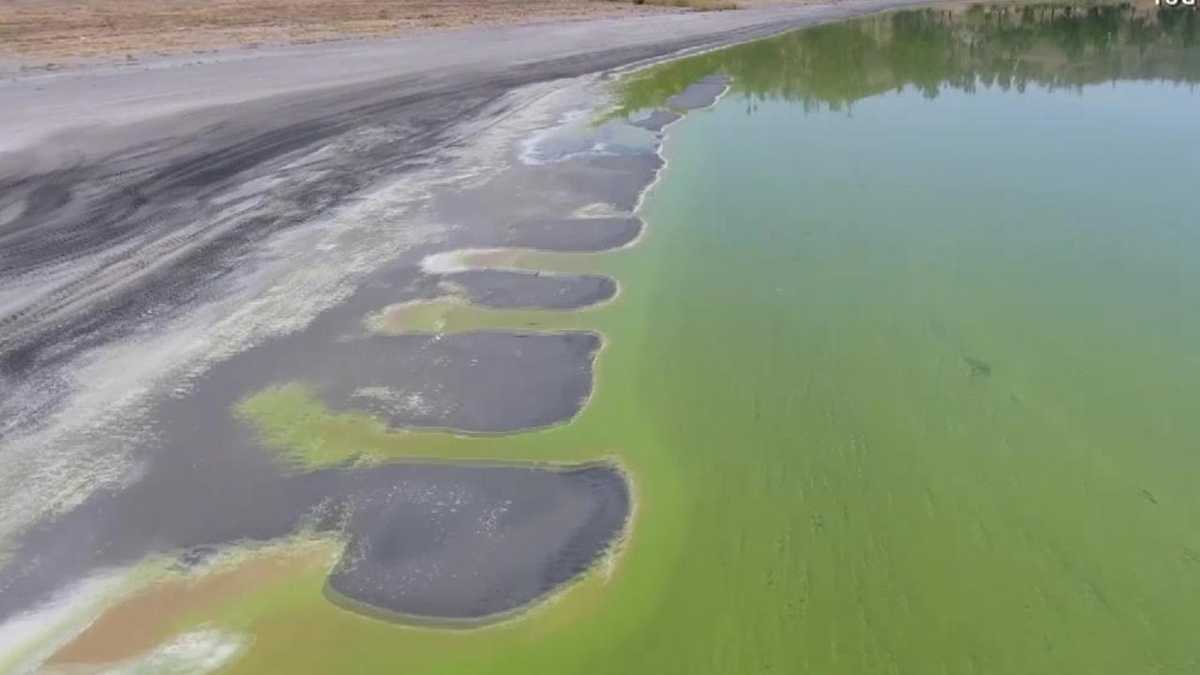The Devastating Effects Of Toxic Algae Blooms On California's Marine Life

Table of Contents
The Mechanisms of Harm: How Toxic Algae Impact Marine Organisms
Harmful algae blooms produce a variety of potent toxins, impacting marine organisms in devastating ways. These toxins disrupt vital physiological processes, leading to illness and death across a wide range of species. Understanding the mechanisms of harm is crucial to effectively address this ecological crisis.
Some of the most dangerous toxins produced by harmful algae include:
- Domoic acid: This neurotoxin accumulates in shellfish and small fish, causing amnesic shellfish poisoning (ASP) in humans and neurological damage in marine mammals, birds, and fish. Symptoms include seizures, disorientation, and even death.
- Brevetoxins: These neurotoxins are produced by Karenia brevis, causing neurotoxic shellfish poisoning (NSP) and respiratory problems in marine life. Brevetoxins can cause paralysis and death in fish, sea turtles, manatees, and birds. They can also affect human respiratory systems.
- Other algal toxins: Many other harmful algae species produce toxins that cause liver damage, reproductive problems, and other debilitating effects in marine organisms.
The effects of these toxins are amplified by bioaccumulation. Smaller organisms consume algae, accumulating toxins in their tissues. Larger predators then consume these smaller organisms, further concentrating the toxins up the food chain. This biomagnification poses a significant threat to top predators, including endangered species.
Specific Impacts on Key California Species
The consequences of toxic algae blooms extend far beyond the immediate effects on individual organisms. These blooms have devastating impacts on commercially important species and endangered populations, creating ripple effects throughout the California coastal ecosystem.
The impacts on commercially important species have significant economic consequences:
- Shellfish poisoning events: Closures of shellfish harvesting areas due to HABs result in substantial economic losses for the fishing industry, impacting livelihoods and food security. These closures also pose significant risks to human health.
- Salmon populations: Toxic algae blooms can directly kill salmon or affect their prey, leading to population declines. This has significant implications for the commercial salmon fishing industry and the wider ecosystem.
The impacts on endangered and threatened species are equally concerning:
- Sea otters: Highly susceptible to domoic acid poisoning, sea otters experience neurological damage, impaired foraging ability, and increased mortality rates during HAB events.
- Whales: Exposure to brevetoxins can lead to respiratory distress, disorientation, and strandings in whales, further jeopardizing their already vulnerable populations.
These events disrupt the delicate balance of California's marine food webs, cascading down to impact the entire ecosystem.
The Role of Climate Change and Pollution in Worsening Blooms
The increasing frequency and intensity of HABs in California are linked to a complex interplay of factors, with climate change and pollution playing significant roles:
- Climate change: Warmer ocean temperatures and altered ocean currents create ideal conditions for the growth and proliferation of harmful algae species. Ocean acidification further weakens the resilience of marine organisms to the effects of toxins.
- Pollution: Agricultural runoff, containing excess nutrients like nitrogen and phosphorus, acts as a fertilizer for algae, fueling their explosive growth. Sewage and other forms of pollution contribute to this nutrient enrichment, exacerbating the problem.
Several factors contribute to the worsening situation:
- Elevated water temperatures directly stimulate algal growth.
- Increased nutrient input from agricultural runoff provides abundant nourishment for HABs.
- Ocean acidification weakens the shells of shellfish and other organisms, making them more vulnerable to HAB toxins.
- Human activities, from agriculture to industrial discharge, significantly exacerbate the problem.
Monitoring and Mitigation Efforts in California
California has implemented various monitoring and mitigation strategies to address the threat of HABs:
- Monitoring programs: Agencies like the California Department of Fish and Wildlife employ satellite imagery, water sampling, and toxin analysis to track HABs and issue warnings. Early detection is crucial to minimize the impacts on human health and marine life.
- Mitigation strategies: Efforts focus on reducing nutrient runoff through improved agricultural practices and wastewater treatment. Restoration projects aim to improve water quality and enhance the resilience of coastal ecosystems. Research is ongoing to improve HAB prediction and explore potential control methods.
Active steps are being taken:
- Satellite imagery and water sampling provide crucial data for early detection and warning systems.
- Shellfish harvesting closures and public health advisories protect human health.
- Restoration efforts focus on improving water quality and ecosystem resilience.
- Research is key to developing improved HAB prediction models and control techniques.
Conclusion: Protecting California's Marine Life from the Threat of Toxic Algae Blooms
Toxic algae blooms pose a severe and escalating threat to California's marine life and coastal ecosystems. The devastating effects of these HABs, driven by climate change and pollution, demand urgent and concerted action. Understanding the mechanisms of harm, the specific impacts on key species, and the contributing factors is essential for effective mitigation.
We must address the root causes of HABs by reducing pollution, mitigating climate change, and improving water quality. Support organizations dedicated to protecting California's marine environment, advocate for policies that reduce pollution, and learn more about HABs. Together, we can safeguard the health of our oceans and the incredible marine life they support and protect California’s coast from the devastating impacts of toxic algae blooms, safeguarding the future of our California marine life and coastal ecosystem. Visit [link to relevant organization 1] and [link to relevant organization 2] to learn more and get involved.

Featured Posts
-
 Housing Market In Freefall Sales Reach Crisis Point
May 30, 2025
Housing Market In Freefall Sales Reach Crisis Point
May 30, 2025 -
 Greve Sncf Du 8 Mai Est Elle Inevitable Notre Analyse
May 30, 2025
Greve Sncf Du 8 Mai Est Elle Inevitable Notre Analyse
May 30, 2025 -
 Recours De L Etat Le Chantier De L A69 Pourrait Reprendre
May 30, 2025
Recours De L Etat Le Chantier De L A69 Pourrait Reprendre
May 30, 2025 -
 New Us Solar Tariffs Hit Malaysia Three Other Nations
May 30, 2025
New Us Solar Tariffs Hit Malaysia Three Other Nations
May 30, 2025 -
 Augsburger Panther Stuermer Volek Verlaesst Den Verein
May 30, 2025
Augsburger Panther Stuermer Volek Verlaesst Den Verein
May 30, 2025
